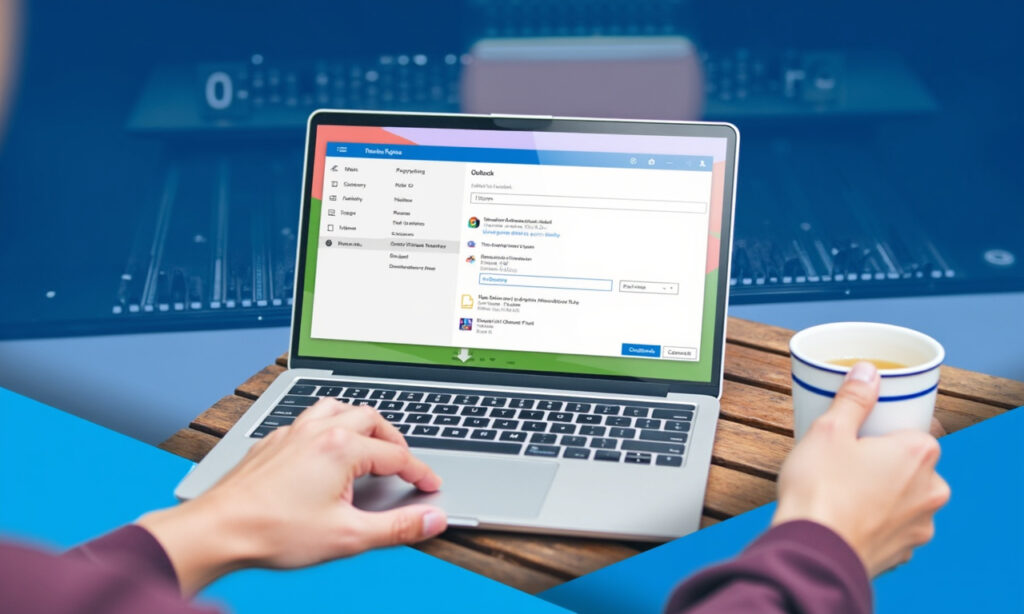What is Inbox Zero?
Inbox Zero is a productivity technique aimed at keeping your email inbox as empty as possible at all times. It’s not just about the quantitative goal of having zero emails, but about efficiently triaging incoming emails to reduce stress and increase productivity[5%.
Setting Up Your Outlook for Inbox Zero
Before diving into the rules, ensure your Outlook settings are optimized for an efficient workflow. Here are a few initial steps:
- Adjust your settings by turning off the focused inbox.
- Select “Cozy” as the display density and group messages into conversations.
- Arrange the reading pane to show the newest messages on top.
- In the Mail > Layout settings, select “Open the PREVIOUS item” when you move or delete an item[2].
1. Move Newsletters and Promotions to a Separate Folder
Newsletters, product updates, and promotional emails can be distracting and clutter your inbox. Here’s how to create a rule to move them:
- Go to Settings and click on Mail in the left pane, then select Rules.
- Click Add new rule and name the rule.
- Specify conditions such as From specific senders or Subject or body includes certain keywords (e.g., “unsubscribe,” “special offer”).
- Set the action to Move to a specific folder, such as “Newsletters.”
- Optionally, check the Run rule now option to apply the rule to existing emails[1][3].
2. Flag Emails From Important Contacts for Immediate Attention
Certain emails require immediate attention, such as those from your manager, clients, or key contacts.
- Create a rule that applies to emails received from specific addresses or domains.
- Choose Mark with importance and set the importance to High.
- Alternatively, use the Categorize option to specify a category color.
- You can also use the Pin to top option to keep these emails at the top of your inbox[1][3].
3. Auto-File Completed Task Emails
Once you’ve responded to or completed an email-based task, automate the filing process:
- Create a rule that detects closing phrases like “resolved,” “done,” or “completed” in the email body.
- Set the action to move these emails to a Completed folder.
- Alternatively, categorize these emails manually and set a rule to move messages of that category to your archive folder[1][3].
4. Redirect CC Emails to a Separate Folder
CC emails can clutter your inbox and are often FYI rather than requiring direct action.
- Create a rule with the condition I’m on the cc line and specify your email address.
- Set the action to move these emails to a CC Emails folder.
- Use exceptions to include key contacts whose CC emails you always want to see immediately[1][3].
5. Block Spam and Unwanted Emails
Spam and unwanted emails can be a significant distraction.
- Define rules to filter emails containing common spam words and move them to the Junk Email folder.
- Right-click unwanted emails, click on Rules, and create a rule to move messages from that sender to the Junk Email or Deleted Items folder.
- Customize the Junk email options in Outlook to block specific senders and domains[1][3].
6. Set Up End-of-Day Cleanup Rules
Ensure your inbox is tidy before logging off by defining cleanup rules:
- Create a rule to move read emails to the Archive folder.
- Use Quick Steps to automate a series of end-of-day actions, such as archiving read emails or moving completed tasks.
- Manually trigger these rules at the end of the day to achieve an Inbox Zero state[1][3].
The Four D’s of Email Management
To further streamline your email workflow, use the Four D’s method:
Do
- If an email can be dealt with in two minutes or less, handle it immediately.
- Use email templates to speed up your responses[1][4].
Delegate
- Forward emails that should be handled by someone else and move the message to a designated folder[1][5].
Defer
- Use Outlook’s snoozing feature or flag emails for follow-up to handle them later[1][5].
Delete
- Unsubscribe from newsletters and promotional emails you no longer want.
- Delete emails that do not require any action or contain information you might need later[1][5].
Conclusion
Achieving Inbox Zero in Outlook is about creating a system that automates and streamlines your email workflow. By setting up these essential rules and following the Four D’s method, you can significantly reduce email clutter, increase productivity, and maintain a clear and focused inbox. Remember to regularly review and adjust your rules as your email patterns change. With these strategies, you’ll be well on your way to enjoying the benefits of an Inbox Zero workday.
